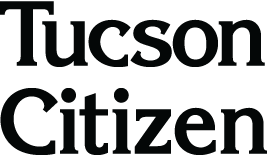Citizen Staff Writer
The Arizona Republic
Raytheon Corp. says new “guided” missile technology developed in Tucson can help reduce civilian deaths and other collateral damage in combat.
Missiles equipped with Raytheon’s Paveway IV kit have new safety features aimed at preventing premature detonation.
The United Kingdom’s Ministry of Defence already has spent about $70 million on the technology, which it used in November and December in Afghanistan.
“We need to target precisely and accurately and hit precisely . . . where we want to,” said Commander Kevin Seymour of the UK’s Royal Navy strike wing, adding that the Paveway IV accomplishes that goal.
The system combines laser and global-positioning-system technology included in previous Paveway models to help missiles navigate through clouds and dust and more accurately pinpoint critical targets. The new kit also can be fitted to smaller missiles, resulting in less shrapnel when the bomb explodes on target.
Raytheon officials expect other foreign military agencies will buy the Paveway IV, which could be a boon for the company as some analysts expect the Obama administration to cut U.S. defense spending.
Howard Rubel, a stock analyst who follows Raytheon for Jefferies & Co. Inc. in New York City, wrote in a recent report that international sales “should nicely exceed U.S. defense spending over the next few years.”
The Royal Navy is Raytheon’s first Paveway IV customer.
About 350 of Raytheon’s 11,500 workers at its Tucson-based Missile Systems division designed and developed the Paveway IV and assemble the guidance-control components for the warhead system.
The system is the latest phase in Raytheon’s Paveway line.
Enhanced versions of the Paveway II and III systems include GPS and laser technology, but the IV also is equipped with new safety features the UK requested.
The fuse used for Paveway IV has a special feature that reduces the likelihood of missiles accidentally detonating if subjected to intense heat.
The new system also does not arm a missile until right before hitting a target.
“(So) you don’t have the risk of it exploding prematurely and hurting innocent people,” spokesman Mike Nachshen said.
Seymour said the Royal Navy dropped 12 Paveway IV missiles in Afghanistan last year.
Texas Instruments’ Defense Systems and Electronics Unit originally developed the Paveway line in the 1960s. Raytheon acquired that part of Texas Instruments in 1997.
More military agencies are likely to jump on board for Paveway IV when they order new aircraft, which have to be equipped with the missiles, said Harmon Stockwell, senior manager of business development for the Paveway program.
Ricky Freibert, Paveway program director at Raytheon, said a Middle Eastern country has expressed interest in buying Paveway IV missiles but declined to say which country.
Raytheon won the contract to build the Paveway IV for the UK in 2003, incorporating specific features the Royal Navy required.
The fuse used for Paveway IV has key features found in previous models, including an “airburst” function that allows a missile to explode before hitting a target.
The bomb can be programmed to explode at a specific altitude, which is useful for canvassing larger target areas, Freibert said.
However, the fuse can also delay explosion until after a missile hits a target to minimize collateral damage. For instance, a bomb could be timed to hit a specific corner of a building and not explode until after it has broken through a wall.
One bonus to the system is the flexibility it provides agencies. Like other Paveway programs, missiles equipped with Paveway IV do not need to be programmed before being shipped out on an aircraft, said John Pike, director of GlobalSecurity.org, a security information Web site in Alexandria, Va.
The Paveway IV also can be used with lighter weight bombs, which results in less shrapnel from explosions and greater efficiency for carrying missiles.
“In today’s environment, where it is so important to not destroy infrastructure, a larger warhead is not necessarily better,” Stockwell said.
Raytheon Missile Systems
Headquarters: Tucson
Business: Division of Raytheon Corp., which builds weapons and defense technology for domestic and foreign military agencies
President: Taylor Lawrence
Employees: 11,500 in Tucson, 12,500 total
Revenue: $5.4 billion in 2008, up 7.7 percent from 2007
Web site: www.raytheon.com

